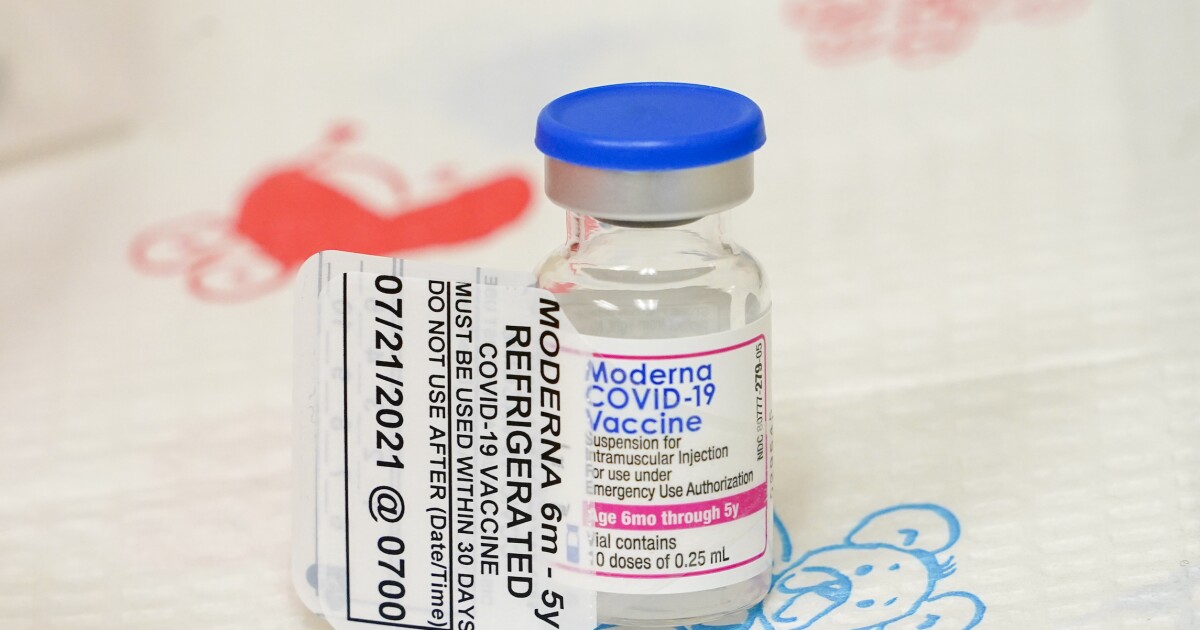

Omicron subvariants BA.5 and BA.4 are causing a massive surge in infections in the United States due to their ability to partially evade immunity — including by reinfecting patients as soon as 1 1/2 months after having COVID-19.
New COVID-19 infections are climbing across the U.S. The test positivity rate exceeded 17% last week, indicating a sizable outbreak is underway and that the U.S. is likely to see considerable upticks in new cases in the coming weeks. Deaths are expected to remain steady due to a combination of population immunity and protection from vaccines, which has thwarted outbreaks that would have caused mass deaths roughly 1 1/2 years ago.
FDA TO CONSIDER FIRST OVER-THE-COUNTER BIRTH CONTROL
BA.5 now accounts for about 53% of new COVID-19 cases in the U.S., while BA.4 makes up about 16% of cases, according to the Centers for Disease Control and Prevention. The omicron subvariants, which so far have not driven up death rates, have proven able to evade antibody protection conferred from three doses of a vaccine. The subvariants have also shown to be adept at reinfecting people who only recently recovered from COVID-19 infections. People infected with the omicron BA.2 variant who have recovered are susceptible to illness caused by one of the newer variants just weeks later, Andrew Robertson, Western Australia’s chief health officer, said last week.
“What we are seeing is an increasing number of people who have been infected with BA.2 and then becoming infected after four weeks,” Robertson said. “So maybe [after] six to eight weeks they are developing a second infection, and that’s almost certainly BA.4 or BA.5.”
Each subvariant is about four times as effective at evading vaccine protection and is more likely to cause breakthrough infections than BA.2, according to a team of physicians at Columbia University.
“Our study suggests that as these highly transmissible subvariants continue to expand around the globe, they will lead to more breakthrough infections in people who are vaccinated and boosted with currently available mRNA vaccines,” Dr. David Ho, a co-author of the study, said last week.
Case rates have remained relatively stable over the past two months. On average, about 108,000 cases are confirmed daily, but the caseload has increased by about 5% over the past two weeks, New York Times tracking shows. Despite minor upticks in new confirmed cases, the rise in test positivity rates and predominance of the BA.5 omicron subvariant portends another late summer or fall surge.
Roughly 17% of COVID-19 tests are returning positive results as of Sunday, according to tracking maintained by Johns Hopkins University, though that is likely an undercount. At-home COVID-19 tests are now more accessible than ever after about two years of booms and busts in availability. The Biden administration has made rapid at-home tests available for free to be mailed to people directly on a monthly basis. The ubiquity of home tests has been an impediment to tracking new cases. Most people who test at home will not report positive results to public health officials, creating blind spots in viral surveillance.
Hospitalizations linked to the newly circulating variants have ticked up steadily since early June. Roughly 37,000 people were hospitalized with COVID-19 every day in the past week, up from about 20,000 this time in May. Admissions to the intensive care unit are also up. Over 4,000 people were in the ICU each day this week, an increase from about 2,200 two months ago.
There is no evidence yet to show that subvariants BA.5 and BA.4 are more virulent than previous omicron subvariants. A blanket of immunity conferred by a combination of prior infection and widespread vaccine coverage has greatly reduced the risk of a massive catastrophic outbreak. The U.S. is unlikely to see a severe surge of the same magnitude as the winter omicron surge that infected roughly a million people at its peak in January.
CLICK HERE TO READ MORE FROM THE WASHINGTON EXAMINER
“It doesn’t appear to be more virulent right now, but that could be a consequence of the fact that we have so much immunity in the population,” former Food and Drug Administration Commissioner Scott Gottlieb said. “It is spreading through immune evasion so people that have been infected with BA.1 do seem to be susceptible to this BA. 4/5 variant.”
The omicron subvariants are already causing a summer surge in Europe. Infections climbed to roughly 59 cases a day per 100,000 people as of July 10, up from 38 cases a day per 100,000 people two weeks ago. But the continent is not seeing a similar increase in ICU admissions.





